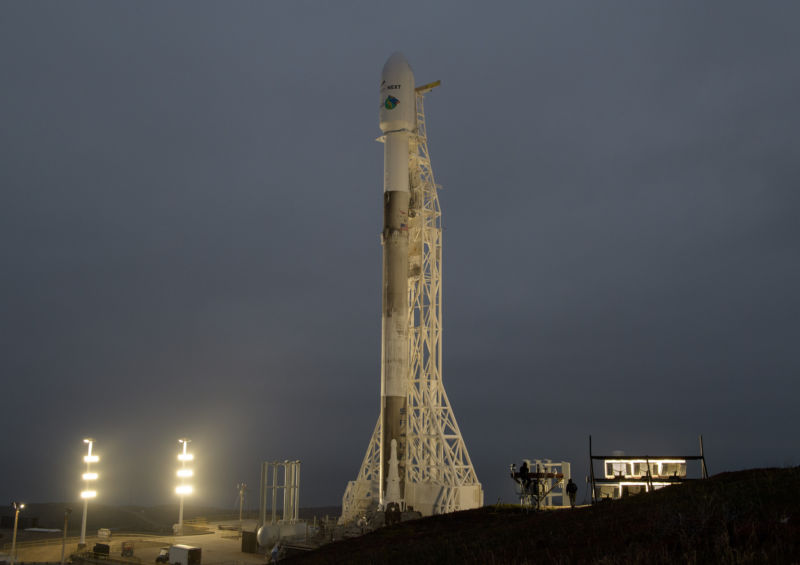
5:10pm ET Update: The Falcon 9 rocket launch went off smoothly, with the second stage deploying the two gravity measuring satellites for NASA about 11 minutes after liftoff. Then, following a coast phase to a higher altitude, the second stage deployed five Iridium communications satellites. SpaceX said it "came very close" to catching the fairing, but missed again.
Maybe next time. The company's next launch from California, where the recovery boat Mr. Steven is stationed, will occur in July.
Original story: SpaceX will attempt its 10th launch of the year on Tuesday, a mission serving two different customers. The Falcon 9 rocket will carry five communications satellites for the Iridium NEXT constellation, along with two gravity-measuring satellites for NASA and the German Research Centre for Geosciences.
This first-stage booster has flown once before, a little more than four months ago when it launched the Zuma mission for the US government—a satellite or spacecraft that was apparently lost in space after it failed to separate from the second stage of the Falcon 9 rocket. SpaceX appears to have been absolved from blame for this mishap, and certainly the first stage booster performed nominally during that mission.
SpaceX will not attempt to recover this core, as it is a Block 4 variant of the booster. Each Block 4 core will fly just two times as the company seeks to move all of its launches onto the newer Block 5 version of the rocket, which has slightly increased performance and numerous upgrades to optimize the first stage for reusability.
Although SpaceX will not seek to recover the first stage, it will attempt to recover one half of the rocket's payload fairing, using a system of on-board thrusters and parachutes to steer the fairing-half back to the Pacific Ocean toward a boat named Mr. Steven. This boat will seek to "catch" the fairing before it falls into the ocean. Past attempts to recover the fairing have come close but not succeeded.
The five Iridium satellites will be part of a new constellation to replace the world's largest commercial satellite network. This is the sixth of eight SpaceX flights for Iridium to deliver a total of 75 satellites into an orbit at 667km above the Earth's surface.
The upper part of the fairing will house two Grace Follow-On satellites that will measure month-to-month changes in Earth's gravitational pull very precisely. These twin satellites will continue the work of monitoring changes in the world's water cycle and surface mass that was started by the original GRACE mission and has produced more than 4,300 research papers to date.
Weather for Tuesday launch is forecast to be 90-percent favorable. Launch time is set for 12:47pm PT (19:47 UTC). The webcast below should begin about 15 minutes before launch.
reader comments
240